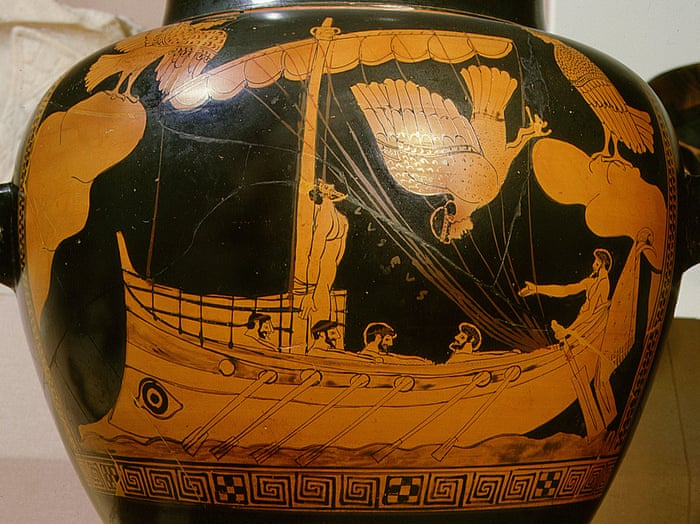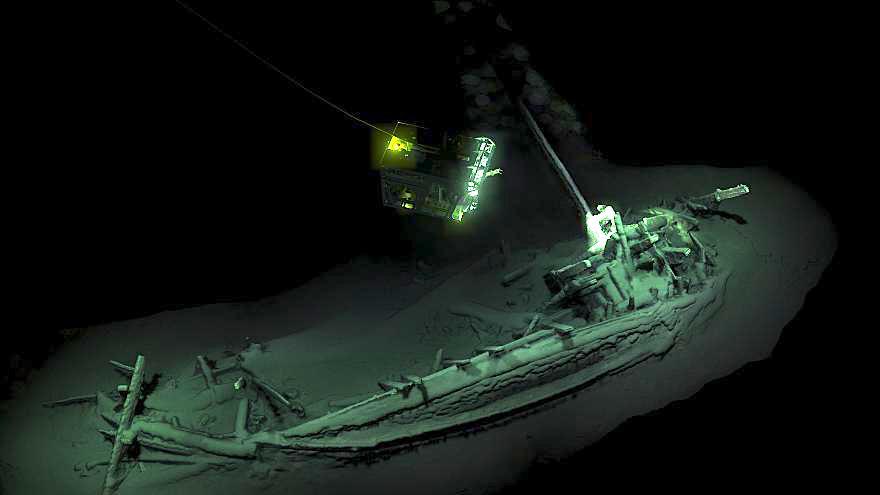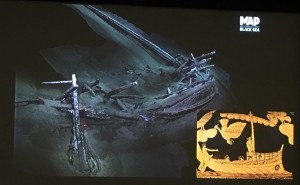• 2,400 year old Greek trading vessel matches the British Museum’s Siren Vase • Found in 2,000m of water
• Her double rudders, tillers, mast and rowing benches intact
A Greek trading vessel described as the world’s oldest shipwreck has been found in the Black Sea off the coast of Bulgaria in remarkably intact condition. The vessel’s mast, rudders and tillers are still intact (and in place!) as are the rowing benches of her crew.
Dr Helen Farr of Southampton University one of the team leaders said the ship had been dated to 400BC. A small piece of wood from the vessel had been carbon dated and confirmed her as the oldest intact shipwreck known to mankind. The vessel had lain undisturbed in 2,000m (6,500ft/1.2miles) of water and was discovered as part of a three year survey of the Black Sea, exploring its depths with remote operated submarine vehicles to gain an understanding of how prehistoric sea-level changes impacted the environment.
The survey has so far discovered 67 such shipwrecks, from a Cossack raiding fleet and Roman galleys to a medieval ship.
However it is the 23-metre (75ft) Greek vessel which grabbed the headlines and Dr Carr described the find as: “Incredible, with its masts and rudders so intact it’s not something you see every day – it’s to do with the level of preservation at that depth. Firstly the Black see is anoxic, so there’s no oxygen in the water at those depths, and it does not have anything living so there is no bacteria that could destroy the wood, so these really early shipwrecks are preserved. The project has been looking at sea level change and the flooding and mapping of the region and looking thiose changes – the shipwrecks are a happy by-product of that.”
Dr Farr added there were no plans to recover or disturb the vessel, which “was perfectly safe lying at that depth”. “It is too deep to dive at those depths and a recovery would be a huge operation.”
“This will change our understanding of shipbuilding and seafaring in the ancient world,” commented Professor Jon Adams, the principal investigator with the Black Sea Maritime Archaeology Project (MAP). “A ship surviving intact from the classical world, lying in over 2km of water, is something I would never have believed possible.”

Siren vase showing Odysseus’ ordeal
Professor Alice Roberts commenting for the BBC said the amazing find looked like the famous Attic Siren vase in the British Museum collection dating from 480 to 470BC which showed Odysseus tied to the mast as his (ear-plugged) crew row him past the alluring song of the sirens.
“I’m not saying that that is Odysseus down there but it looks just like that ship and the preservation is amazing!”
“When we first saw the ship emerging from the sea mist of the seabed we all thought ‘that looks a bit familiar’. And it does look like the Siren Vase, with the rudders still in place, sweeping out, it has a high curved stem and stern, the mast is in place with even the rowing thwarts. There could still be the cargo in the hold – we just don’t know.”
The documentary team made a two-hour film which researchers said will appear online soon.






